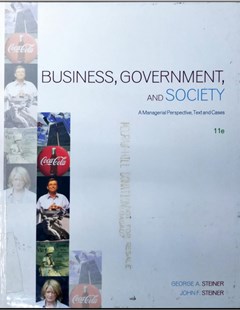Corporate After Shock
In the wake of Enron’s implosion and other major corporate meltdowns, there have been hasty calls for stricter laws to regulate the markets and products in which these companies were involved. But without proper analysis of the situation, these responses may unknowingly cause greater damage to the economy and investors than the original events. To avoid rushing into politically charged action and ensure that appropriate measures are implemented, we must first take the time to consider what really went wrong, then carefully decide how to prevent a repeat of such corporate disasters.
2003
In the wake of Enron’s implosion and other major corporate meltdowns, there have been hasty calls for stricter laws to regulate the markets and products in which these companies were involved. But without proper analysis of the situation, these responses may unknowingly cause greater damage to the economy and investors than the original events. To avoid rushing into politically charged action and ensure that appropriate measures are implemented, we must first take the time to consider what really went wrong, then carefully decide how to prevent a repeat of such corporate disasters.
In an effort to curb the unnecessary "man-made aftershocks" that continue to ripple throughout the business world today, Corporate Aftershock: The Public Policy Lessons from the Collapse of Enron and Other Major Corporations has been written as a reasoned, informed response to the numerous proposals to restrict derivatives, stifle structured financing activities, and amend shareholder protection principles and practices following the failure of Enron and other corporations. Editors Christopher Culp and William Niskanen have assembled an expert cast of contributors, each of whom are leaders in their respective fields–from credit risk management to energy and derivatives markets–to provide an unbiased public policy analysis of the failure of Enron and other major corporations.
Comprised of five distinct sections, Corporate Aftershock offers an in-depth examination and straightforward explanation of issues that focus on the policy lessons specific to the markets Enron traded in, as well as the specialized financial instruments it used in its endeavors.
Topics discussed include:
Was Enron an innovator, a sham, or a bit of both? What can we learn from Enron’s failure that might impact the future operation and regulation of energy and derivatives markets? What role did accounting and disclosure policies play in Enron’s abuse of otherwise legitimate structured finance activities? Without rushing to judgment, Corporate Aftershock answers these and many other questions. Dealing with corporate disasters through hasty reactions rarely solves the true problems. With Corporate Aftershock as your guide, you’ll learn what sensible solutions can be made in the wake of fallout from corporate disasters.
Christopher L. Culp. Corporate After Shock. John Wiley &Sons,Inc, 2003
Ngành Quản trị kinh doanh (7340101)
 |  |  |
| Corporate After Shock | Business, Government and Society Eleventh | Business driven information systems |
Thứ Ba, 14:42 16/08/2022
Copyright © 2018 Hanoi University of Industry.